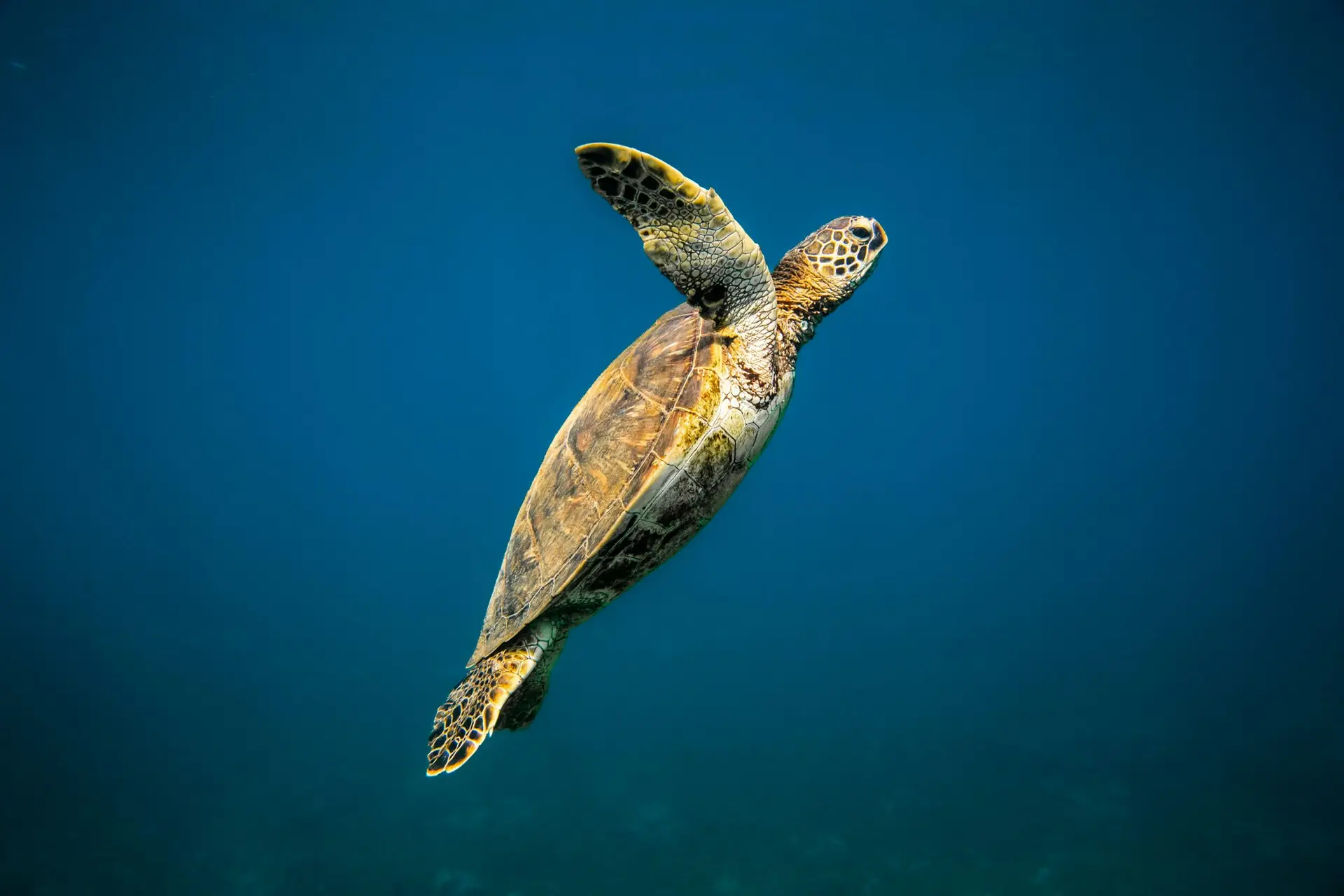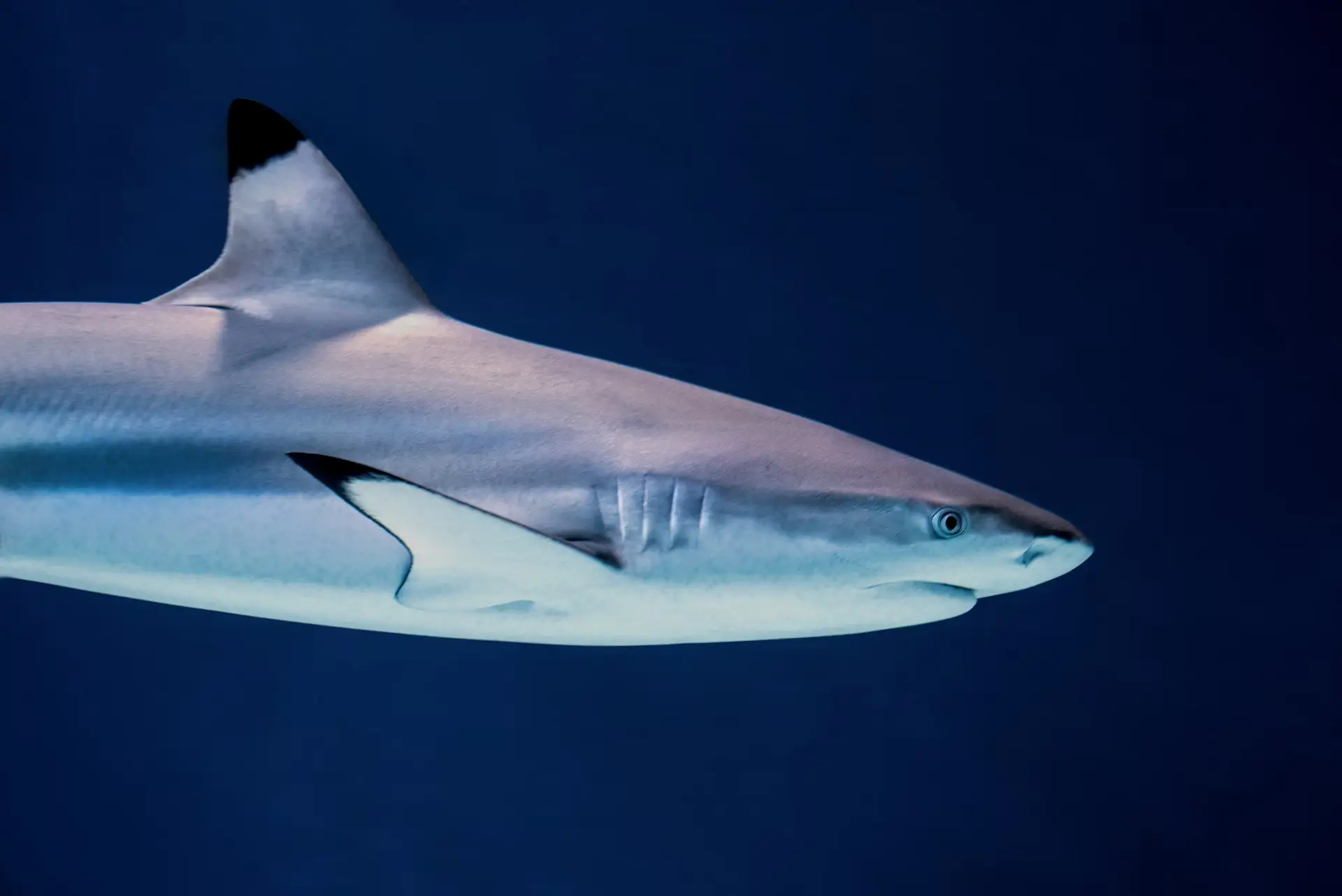There are 7 species of sea turtles in the world, but today we’re going to introduce you to two of our favourites that are essential to coral reefs: the hawksbill and the green turtle.

The hawksbill turtle
Taxonomy
The hawksbill turtle, Eretmochelys imbricata of the genus Eretmochelys Fitzinger, is a species of turtle in the family Cheloniidae Oppel. In France it is known as tortue à écailles or tortue à bec de faucon.

Where it lives
This species migrates regularly. It lives mainly in tropical areas of the Atlantic and Pacific oceans and in the Mediterranean Sea. It mainly occupies shallow waters such as coral reefs. In fact, the hawksbill turtle prefers to live close to coral reefs because of the large amount of food they provide.
Alimentation
The hawksbill is an omnivore. With no teeth but a pointed beak, it feeds mainly on plants during the first few weeks of its life. Later it will start to eat sea urchins, crabs, sponges and coral. It forages on coral reefs or the continental shelf.
The body type
The dimensions of the specimen range from 60 to 90 cm, with a weight between 45 and 130 kg. The carapace is elongated with superimposed plates. The dorsal surface is dark brown or golden with red, orange and black markings. In contrast to the male, the female has lighter pigmentation. The head is small and elongated, shaped like a pointed beak. The four flippers are each equipped with two small or large claws, depending the gender of the turtle.
Breeding
It reproduces every two or three years during breeding seasons that are 15 days apart. It can reproduce when its carapace reaches a size of 70 cm (20 – 40 years old). Mating takes place in shallow water. Egg-laying takes place at night on isolated beaches with vegetation. The turtle digs a hole in the sand and lays its eggs. It may lay two to five clutches of 150 to 200 eggs. The egg will hatch after around 60 days, depending on the temperature, and the newborn will go straight into the sea.
The hawksbill turtle is a solitary reptile. It allows itself to be carried by the current towards the coral reefs where it can reproduce.
IUCN Red List
Since 1968, the hawksbill turtle has been included on the IUCN (International Union for Conservation of Nature) Red List. This indicates that the species is facing an imminent risk of extinction. The primary contributing factors are overfishing, poaching and pollution. To mitigate the impact, several measures have been implemented, including the protection of nesting sites, migration routes and feeding areas. Additionally, the gradual destruction of coral reefs is expected to significantly disrupt hawksbill turtle habitats, leading to their local extinction.
The green turtle

Taxonomy
The green turtle, scientifically designated as Chelonia mydas of the genus Chelonia Brongniart, is a species of turtle belonging to the family Cheloniidae.
Where it lives
The green turtle is a highly migratory species, covering distances of between 20 and 90 km a day. Like the hawksbill turtle, it inhabits shallow waters. It is found in tropical and subtropical regions, where the temperature must remain below 20°C. It is a common sight in the maritime areas of major cities, particularly in the Mediterranean Sea.
Alimentation
Being omnivorous during its first years of life, it eats seagrass and crustaceans. When it reaches sexual maturity, it becomes a herbivore and grazes on sea grass.
The body type
The dimensions of the specimen range from 80 to 120 cm in length and 130 to 300 kg in weight. Its carapace is domed with several superimposed plates. The dorsal surface is green, grey, yellow, brown and black. The head is small, round and smooth. The lower jaw is toothless, with an edge. The fins are grey on top and yellow underneath, with a claw on each.
Breeding
It reproduces every two to four years during breeding seasons that are 15 days apart. It can reproduce when it reaches sexual maturity, which is between 18 and 50 years of age. Like the hawksbill, the green turtle breeds in shallow water near its nesting beaches. To lay her eggs, she goes to the beach where she was born. It lays 1 to 9 clutches of 75 to 200 eggs. The eggs hatch after 45 to 80 days. The hatchling is about 5 cm long and weighs 25 grams. Its shell is blue-black with a white plastron. The green turtle is a solitary reptile, but sometimes meets other turtles, especially when feeding.
IUCN Red List
The green turtle is now classified as critically endangered on the IUCN Red List. The causes of its decline are the same as those of the hawksbill turtle (poaching, overfishing, pollution, etc.). Furthermore, the green turtle is a species that lives in coral reefs, and is therefore similarly affected by the decline in coral reef ecosystems.





